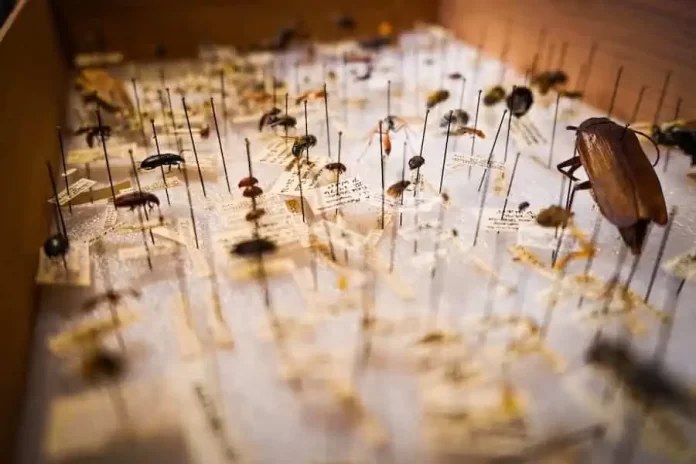Palmetto bugs, commonly referred to as American cockroaches, are unwelcome pests that can be found in various environments. While they are known for their resilience and adaptability, there is a common question that often arises – Can palmetto bugs swim? In this article, we will delve into the aquatic abilities of these pests and explore their behavior in water.
The Palmetto Bug Profile:
Palmetto bugs (Periplaneta americana) are large cockroaches that inhabit warm and humid environments. They are winged insects that can measure up to two inches in length and are reddish-brown. While they prefer to dwell in dark, damp areas, their behavior in water might surprise you.
Can Palmetto Bugs Swim?
Yes, palmetto bugs can indeed swim. These pests have a remarkable ability to navigate through water, using their legs to paddle and their bodies to remain buoyant. While they are not naturally aquatic creatures like certain insects, palmetto bugs have developed mechanisms that allow them to survive and move through water for short periods.
Adaptations For Swimming:
Palmetto bugs, also known as American cockroaches, have developed several adaptations that enable them to navigate and survive in aquatic environments, showcasing their remarkable ability to swim:
Leg Structure And Water-Repelling Hairs:
Palmetto bugs possess specialized leg structures that aid in their swimming abilities. The hairs on their legs are water-repellent, allowing them to paddle through water without getting bogged down. These hydrophobic hairs create less resistance against water, helping the bugs move more efficiently.
Air Trapping For Buoyancy And Oxygen Supply:
One of the intriguing adaptations of palmetto bugs for swimming is their ability to trap air bubbles against their bodies. This trapped layer of air acts as a buoyancy aid, helping them remain afloat on the water’s surface. Additionally, these trapped air pockets serve as a makeshift oxygen supply, enabling the bugs to stay submerged for short periods.
Resilient Exoskeleton With Water-Repelling Qualities:
Palmetto bugs have an exoskeleton coated with a waxy layer that repels water. This waxy coating prevents their bodies from becoming waterlogged, ensuring that they can maintain their agility and mobility while swimming. This adaptation is particularly useful in avoiding the risk of sinking or slowing down due to water absorption.
These adaptations collectively enable palmetto bugs to effectively traverse through water, even though they are not natural aquatic creatures. While they are capable of swimming, it’s important to note that their swimming behavior is primarily a survival mechanism rather than a preferred mode of transportation.
Behaviour in Water:
While palmetto bugs can swim, they are not naturally aquatic insects. Their swimming abilities are more of a survival mechanism than a preferred mode of transportation. If they come into contact with water, they will often seek to escape it as soon as possible, as extended exposure to water can lead to exhaustion and potential drowning.
Preventing Palmetto Bug Infestations:
Palmetto bugs, or American cockroaches, can be a nuisance if they infest your living spaces. To prevent these pests from taking over your home, consider implementing the following strategies:
Maintain Cleanliness: Keep your living spaces clean and free of crumbs, spills, and food debris. Regularly clean floors, countertops, and dining areas to eliminate potential food sources that attract palmetto bugs.
Reduce Moisture: Palmetto bugs are drawn to damp environments. Fix leaky pipes, faucets, and other sources of moisture promptly. Ensure that basements, crawl spaces, and bathrooms are well-ventilated and dry.
Seal Entry Points: Seal cracks, gaps, and crevices in walls, floors, and foundations. Palmetto bugs can enter through tiny openings, so blocking potential entry points will help prevent their access to your home.
Store Food Properly: Store food in airtight containers to deny palmetto bugs easy access to their food sources. This not only prevents infestations but also keeps your pantry items fresh and safe from contamination.
Outdoor Maintenance: Trim bushes, trees, and shrubs away from your home’s exterior. These plants can provide hiding spots and pathways for palmetto bugs to enter your house.
Regular Garbage Disposal: Dispose of trash regularly and store it in sealed containers. Avoid leaving trash bags outside overnight, as they can attract pests.
Pet Food Management: If you have pets, don’t leave their food out overnight. Clean up any leftover food promptly to avoid attracting palmetto bugs.
Regular Inspection: Conduct routine inspections of your home, paying attention to potential problem areas like basements, attics, and crawl spaces. Detecting signs of palmetto bug activity early can help prevent infestations from worsening.
Professional Pest Control: If you notice signs of an infestation or have had previous issues with palmetto bugs, consider hiring a professional pest control service. They can provide targeted treatments and advice on ongoing prevention.
Educate Residents: Educate your household members or tenants about palmetto bug prevention. Everyone’s cooperation is essential in maintaining a pest-free environment.
By incorporating these preventive measures into your routine, you can significantly reduce the risk of palmetto bug infestations and ensure a comfortable and pest-free living environment.
Conclusion:
In conclusion, palmetto bugs can indeed swim, showcasing their adaptability to various environments. While their ability to navigate through water might be surprising, it’s important to focus on prevention and control measures to keep these pests from becoming a nuisance in your living spaces. Maintaining a clean, dry environment and sealing potential entry points can go a long way in deterring palmetto bug infestations.


